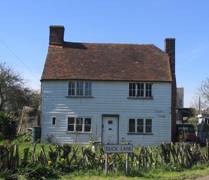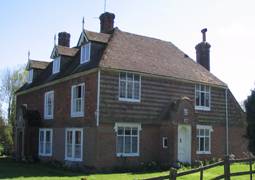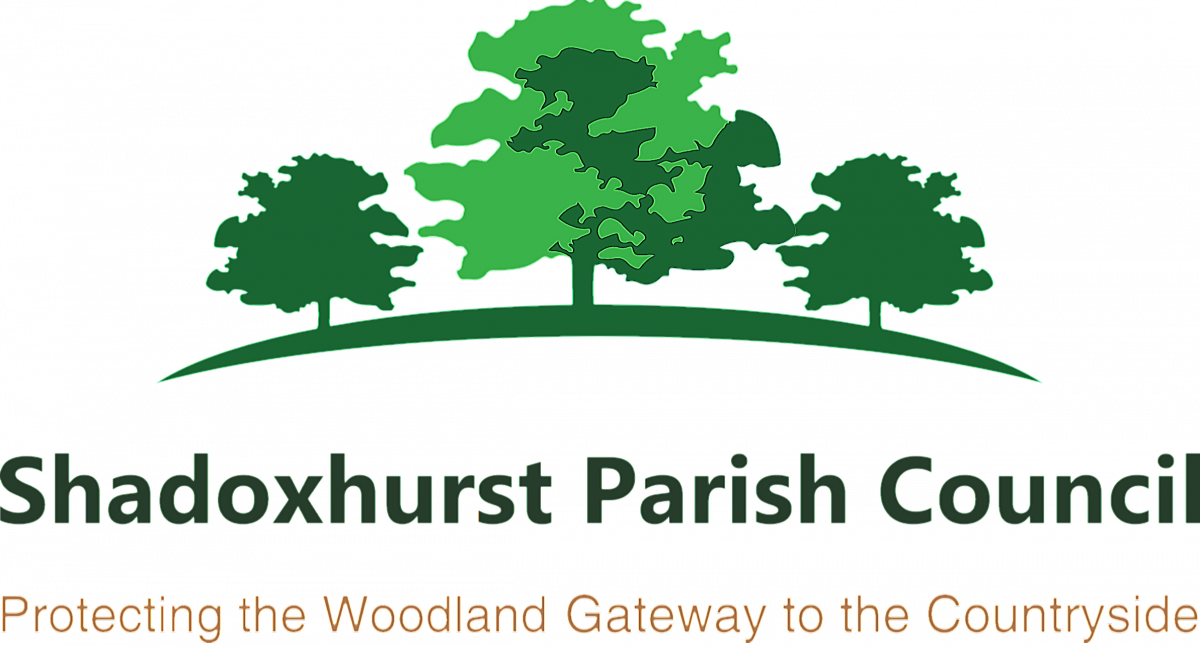More about Shadoxhurst, the Woodland Village
History
 The Village of Shadoxhurst is set in one of the loveliest areas of the eastern Weald, between the North Downs and Romney Marsh. It may be because of its relative isolation for many centuries amidst the woods and forest that little is known about the origins of its name.
The Village of Shadoxhurst is set in one of the loveliest areas of the eastern Weald, between the North Downs and Romney Marsh. It may be because of its relative isolation for many centuries amidst the woods and forest that little is known about the origins of its name.
The earliest written record of Shadoxhurst is from 1239 when the parish name was spelled ‘Schettokesherst’. Although the origin of the first part of the name is obscure, it may have come from a family name commonly known centuries ago, such as Shaddock or Shattock. Hurst or Herst is an Anglo-Saxon word which means a wooded knoll.
 In the past Shadoxhurst has been a home to a leper colony, grew vast fields of hops and experienced high infant mortality rates with many children dying before the age of ten years old. In 1846 a school was built and then decommissioned in 1916, and during the First World War Nickley Wood was heavily felled to provide props for the trenches. In 1940, the village was host to evacuees from London until it was realised that they and village children, would be safer dispersed to other areas. It was during this period that five flying bombs fell on the Parish, clearing areas of trees and undergrowth.
In the past Shadoxhurst has been a home to a leper colony, grew vast fields of hops and experienced high infant mortality rates with many children dying before the age of ten years old. In 1846 a school was built and then decommissioned in 1916, and during the First World War Nickley Wood was heavily felled to provide props for the trenches. In 1940, the village was host to evacuees from London until it was realised that they and village children, would be safer dispersed to other areas. It was during this period that five flying bombs fell on the Parish, clearing areas of trees and undergrowth.
Covering approximately 2,000 acres, the many footpaths and coppice woods surrounding the parish offer many walks and interesting sights. The Parish Church is dedicated to St. Peter and St. Paul and the first recorded parish priest of Shadowehurst, was John de Iford who was appointed in January 1289. The Church consists of a nave and chancel. The tower was taken down about the year 1788 and by 1868 the Church had fallen into disrepair. The necessary funds were raised and the Church was re-opened in April 1869. The roof and turret needed repairs in 1952 which cost £400. Twelve years later a sudden outbreak of dry rot closed the Church when floorboards, pulpit, lectern and pews were removed and new flooring and seating accommodation installed which cost many hundreds of pounds before it was able to be opened again in March 1965.
 Among interesting points are the font which is lead lined and hexagonal; a shape fairly common in the Midlands but rare in the South East. Remnants of old glass can he seen in the West Window, in a window on the North side of the nave and the glass in the East window was erected by ‘Parishioners and Friends’ in 1923. In white marble on the North wall of the chancel is a memorial to Sir Charles Molloy who was Lord of the Manor of Shadoxhurst in the mid eighteenth century. The clock is a War Memorial of the 1914 -1918 War and the pews were obtained from a redundant church, refurbished and installed in 1977. Records of Births, Marriages and Deaths go back to the year 1538.
Among interesting points are the font which is lead lined and hexagonal; a shape fairly common in the Midlands but rare in the South East. Remnants of old glass can he seen in the West Window, in a window on the North side of the nave and the glass in the East window was erected by ‘Parishioners and Friends’ in 1923. In white marble on the North wall of the chancel is a memorial to Sir Charles Molloy who was Lord of the Manor of Shadoxhurst in the mid eighteenth century. The clock is a War Memorial of the 1914 -1918 War and the pews were obtained from a redundant church, refurbished and installed in 1977. Records of Births, Marriages and Deaths go back to the year 1538.
 The Rectory was built in 1849 replacing the original as the Rev. Charles Rolfe, whose ancestor was John Rolfe who married Pocahontas, wished to live in the parish. In 1954 it was sold and the land in front of the house was bought by West Ashford RDC who built the present Rectory Bungalows. Among other interesting sights are (above left) Quince Cottage, Green Farm which was the King’s Head until 1850 and the Methodist Chapel.
The Rectory was built in 1849 replacing the original as the Rev. Charles Rolfe, whose ancestor was John Rolfe who married Pocahontas, wished to live in the parish. In 1954 it was sold and the land in front of the house was bought by West Ashford RDC who built the present Rectory Bungalows. Among other interesting sights are (above left) Quince Cottage, Green Farm which was the King’s Head until 1850 and the Methodist Chapel.
In the 1780s there were twenty-two houses in the parish and in 1821 the population was 224. In a book now sadly out of print, L.M. Chowns of Moreton House, Shadoxhurst wrote that in May 1976 the Planning Department of the Borough of Ashford produced a Village Study Report which threatened village life by expansion and change.
Parish & Local History Records.
Are you searching for old parish records not available on this web site? Researching your family tree? Interested in local history archives? The Kent History and Library Centre at Maidstone is the Headquarters for the heritage and archives service. It holds manuscript and printed records for Shadoxhurst and the wider County of Kent.
Telephone 08458 247200 or email historyandlibrarycentre@kent.gov.uk. Click here for more information.

